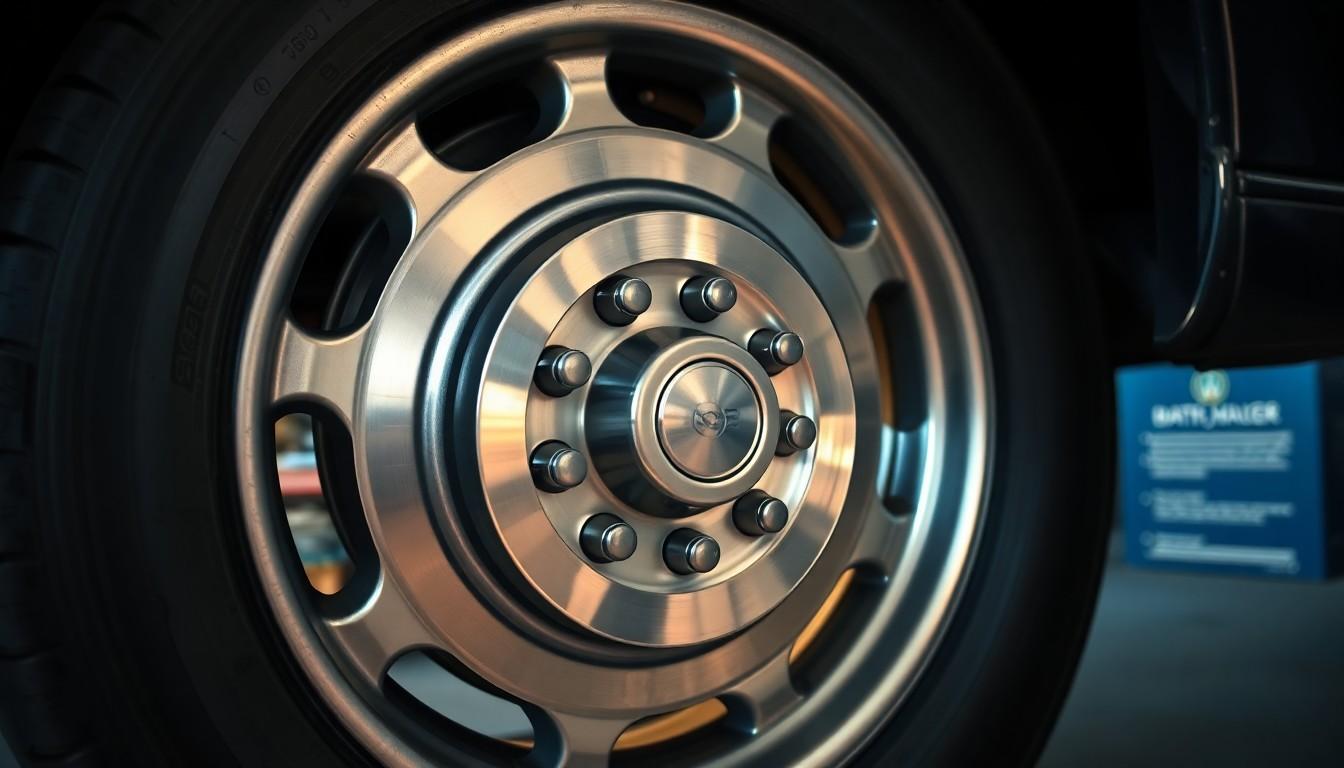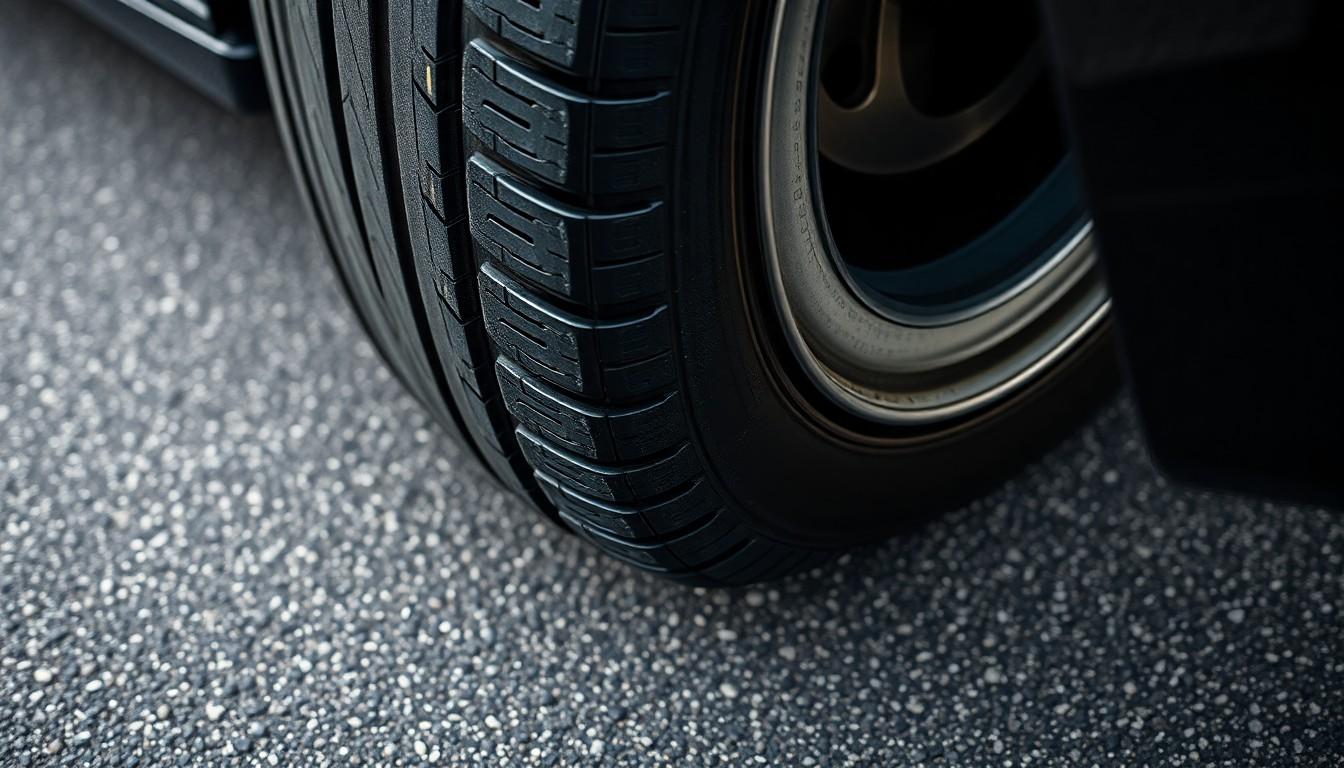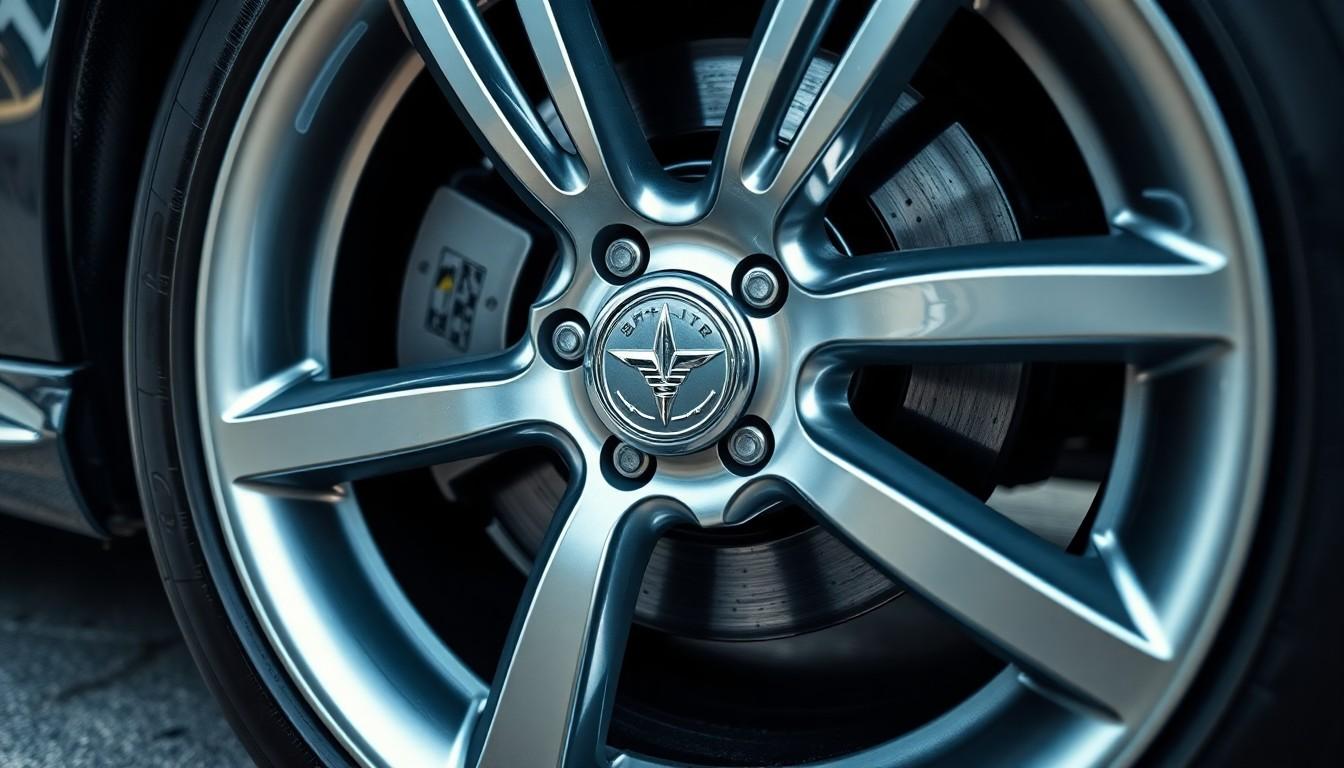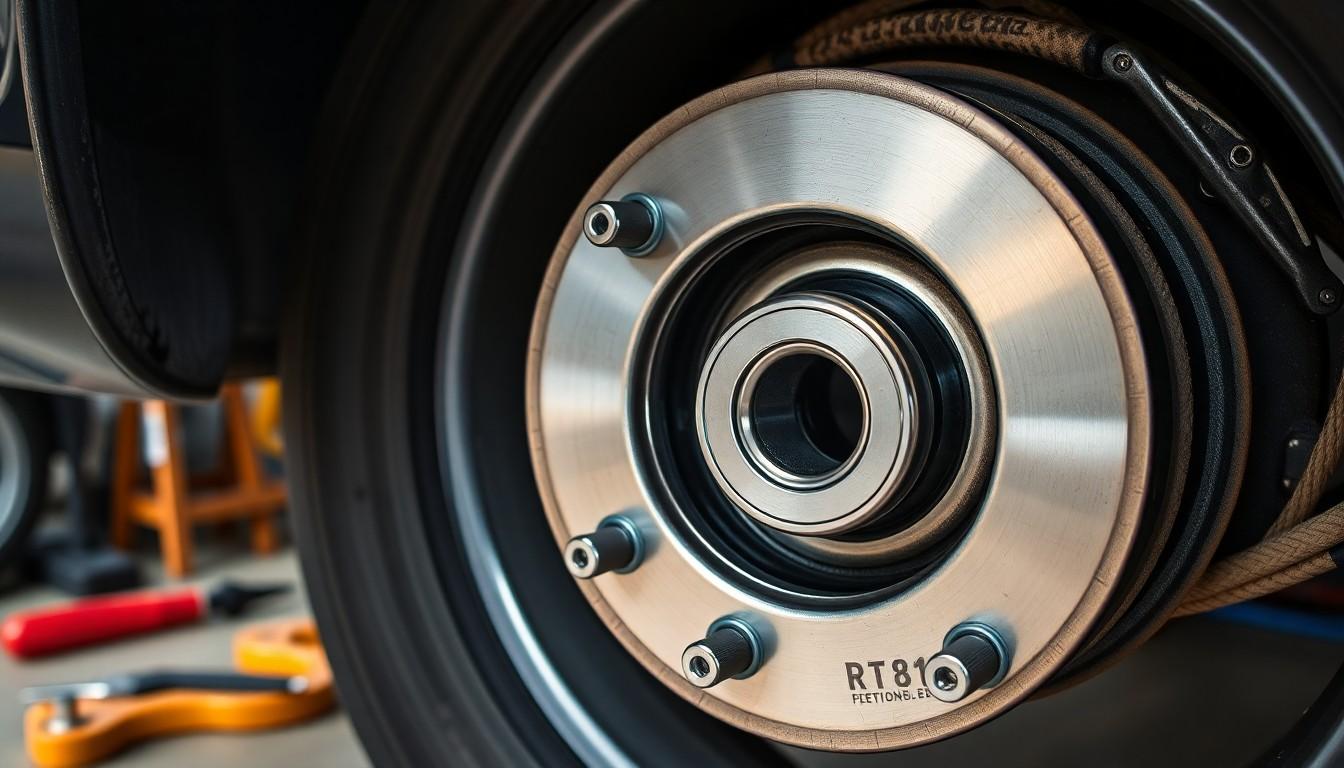Ever wondered what makes your car roll smoothly down the road? The answer lies in those circular components that touch the pavement – your car wheels. While they might appear simple at first peek, wheels are sophisticated assemblies made up of several critical parts working together to ensure your safety and driving comfort.
We’ve broken down the anatomy of a car wheel into its essential components for you to understand what’s supporting your vehicle. From the outer tire that grips the road to the inner hub that connects to your car’s axle, each part plays a vital role in your driving experience. Whether you’re a car enthusiast or simply want to understand your vehicle better, knowing these wheel components will help you make informed maintenance decisions.
Understanding Car Wheel Anatomy: The Essential Components
Car wheels consist of multiple integrated components that work together to provide stability, safety, and performance. Each part serves a exact function in the wheel assembly, contributing to the overall driving experience. Let’s explore these components in detail to better understand how they interact.
The Rim
The rim forms the outer edge of the wheel where the tire mounts. Made typically from aluminum alloy or steel, rims come in various sizes measured in inches of diameter. Most modern car rims feature a drop center design that facilitates tire mounting and dismounting. The inner edge of the rim contains the bead seat where the tire creates an airtight seal, ensuring proper inflation and performance.
The Hub
Located at the center of the wheel, the hub connects the wheel to the vehicle’s axle. This crucial component houses the wheel bearings that allow smooth rotation while supporting the vehicle’s weight. Hubs contain mounting holes that align with the vehicle’s studs for secure attachment. Premium vehicles often feature hub-centric designs where the hub bears the vehicle’s weight rather than the lug nuts.
Lug Nuts and Bolts
Lug nuts secure the wheel to the hub using threaded fasteners that match the wheel studs. Different vehicles use varying numbers of lug nuts, typically between four and six, depending on the vehicle’s size and weight requirements. The torque specification for these fasteners ranges from 80 to 140 foot-pounds, varying by manufacturer and vehicle model. Proper torque application prevents wheel loosening during driving while avoiding damage to the wheel or hub.
Valve Stem
The valve stem provides access for adding or releasing air from the tire. Protruding through a hole in the rim, this small rubber or metal component maintains tire pressure integrity with an internal spring-loaded mechanism. Modern valve stems often include pressure monitoring sensors that communicate with the vehicle’s onboard computer. Their typical lifespan ranges from 3-5 years before rubber components may deteriorate.
Center Cap
Center caps cover the hub area of the wheel, offering both aesthetic appeal and protection. These covers prevent dirt, moisture, and road debris from entering the hub assembly. Available in various materials including plastic, chrome, and aluminum, center caps often display the vehicle manufacturer’s logo or custom designs. Their snap-in or screw-in attachment methods vary across different wheel designs.
Wheel Weights
Wheel weights balance the wheel assembly, eliminating vibrations caused by uneven weight distribution. Technicians attach these small metal weights to exact locations on the rim during the balancing process. Modern wheels typically require between 1-4 ounces of weights, precisely positioned to counteract natural weight variations. These weights come in clip-on styles for steel wheels or adhesive types for aluminum wheels where clips might damage the finish.
The Core Components: Rim and Disc

The rim and disc form the foundation of any car wheel assembly, working together to support the tire and connect the wheel to the vehicle. These components might not be as visible as tires, but they’re critical to your vehicle’s performance, safety, and efficiency.
Rim Structure and Materials
The rim serves as the skeleton of the wheel assembly, providing essential support and structure for the tire to maintain its shape and hold air. Its construction includes three main sections: the outer lip where the tire bead sits, the barrel forming the main body, and the flanges that create edges for the tire beads to rest against. Manufacturers typically create rims from either steel or aluminum, with each material offering distinct advantages. Steel rims deliver superior durability and strength, making them ideal for trucks and vehicles carrying heavier loads. Aluminum rims, by contrast, offer a lighter-weight alternative that can enhance fuel efficiency and improve vehicle handling.
The configuration of a rim, including its width and depth dimensions, determines which tire sizes can be properly fitted to it. Different vehicles require exact rim styles that serve both practical purposes and aesthetic preferences, balancing form with function for optimal performance.
Disc Design and Function
The disc component connects the rim to the vehicle’s axle through several crucial elements. At its center lies the center bore, a large hole that fits onto the axle hub assembly and bears the axle’s load. This opening must match or exceed the size of the axle mount for proper installation, with hub rings available to center wheels with larger bores. Surrounding this central opening, the center disc (sometimes called the plate) contains the lug holes and acts as the meeting point for the spokes.
The disc plays a vital role by receiving and distributing forces from both the axle and braking systems throughout the wheel assembly. Its mounting pad, located on the back of the center disc, rests directly against the axle seat to ensure proper alignment and stability. Through this design, the disc maintains the critical connection between the wheel and vehicle, ensuring stable and safe operation while driving.
Tire Basics: More Than Just Rubber

Tires are complex engineering marvels that blend multiple materials and technologies to deliver performance, safety, and durability. Modern tires feature sophisticated construction with many layers and components working together to handle various road conditions including icy, snowy, and wet surfaces.
Tire Construction Layers
The tread serves as the outermost layer of the tire, making direct contact with the road and providing essential traction. Beneath the tread lies the sidewall, offering structural support and protection from road hazards while connecting the tread to the tire’s beads. An inner liner sits inside the tire, functioning as an airtight membrane that holds compressed air and maintains proper inflation. Belt layers made from materials like polyester or Kevlar are sandwiched between these components, adding strength and stability while maintaining the tire’s shape under pressure. The carcass forms the main body of the tire, consisting of multiple layers of rubber and fabric that provide the foundation for all other components.
Sidewall Components and Markings
Sidewall markings contain critical information about your tire’s specifications and capabilities. These markings include the tire size, displayed as a series of numbers and letters (such as 225/60R17) that indicate width, aspect ratio, construction type, and wheel diameter. Load ratings on the sidewall reveal the maximum weight the tire can safely support during operation. Speed ratings, represented by a letter, indicate the highest speed the tire is designed to handle safely. The tread wear index appears as a number that compares the tire’s expected longevity to a standard reference tire. Traction ratings (A, B, or C) provide information about the tire’s grip performance on wet pavement, with A offering superior traction compared to B and C ratings. Understanding these markings is essential for selecting appropriate replacements and maintaining optimal vehicle performance.
Critical Hardware: Lug Nuts and Valve Stems

The car wheel depends on several critical hardware components that ensure safety and functionality. These seemingly small parts play outsized roles in keeping wheels properly secured and tires correctly inflated during your drive.
Lug Nuts, Bolts and Wheel Studs
Lug nuts serve as the primary fasteners that secure your wheel to the hub of the vehicle. These components are tightened in a exact star pattern to distribute pressure evenly across the wheel, preventing damage and ensuring proper attachment. Wheel studs are the threaded rods protruding from the hub that lug nuts screw onto, creating the secure connection between wheel and vehicle. Some European vehicles use bolts instead of the stud-and-nut combination, though this configuration is less common in most passenger cars. Proper torque application to these fasteners is essential—too loose and the wheel may detach during driving, too tight and you risk stripped threads or warped brake rotors.
Valve Stems and TPMS Sensors
Valve stems provide the access point for adding or releasing air from your tires, typically located on the rim’s exterior. These components include a protective cap that shields the valve mechanism from dirt, moisture, and road debris that could compromise tire pressure. Modern vehicles feature Tire Pressure Monitoring System (TPMS) sensors, usually positioned inside the tire or integrated with the valve stem assembly. TPMS sensors continuously monitor tire pressure and transmit real-time data to your vehicle’s onboard computer system. When pressure drops below recommended levels, these sensors trigger dashboard alerts, giving drivers immediate notification of potential safety issues. Maintaining proper valve stem integrity and functioning TPMS sensors contributes significantly to overall tire performance, fuel efficiency, and driving safety.
Decorative and Protective Elements

Car wheels incorporate various decorative and protective elements that enhance appearance while providing essential protection against environmental factors. These components not only contribute to the wheel’s aesthetic appeal but also serve functional purposes in maintaining wheel integrity and performance.
Hub Caps and Center Caps
Hub caps are protective covers that fit over the entire wheel, shielding the hub assembly and lug nuts from dirt, moisture, and road debris. They’re typically made from plastic, stainless steel, or aluminum and come in many designs to enhance a vehicle’s appearance. Center caps, in contrast, are smaller covers that fit precisely in the middle of the wheel, covering just the center bore and lug nuts. Many center caps feature vehicle manufacturer logos or custom designs, adding a personalized touch to the wheel’s appearance. Both these components protect critical wheel parts from corrosion and damage while contributing significantly to the overall aesthetic of the vehicle.
Wheel Weights and Balance
Wheel weights are small metal or adhesive components attached to the rim to counterbalance any uneven weight distribution in the tire and wheel assembly. These weights compensate for manufacturing irregularities that could otherwise cause vibration and uneven tire wear. Proper wheel balancing using these weights ensures smooth operation at various speeds, prevents premature wear on suspension components, and provides a more comfortable driving experience. Technicians typically attach wheel weights to either the inner barrel of the rim or apply adhesive weights to the inside edge, keeping them discreet while maintaining their crucial function. Regular balancing checks after tire rotations or replacements help maintain optimal wheel performance and extend tire life.
Wheel Bearings and Hub Assembly

Wheel bearings and hub assemblies form the critical connection between your vehicle’s wheels and axles. These components work together to support the vehicle’s weight while allowing wheels to rotate smoothly with minimal friction.
How Wheel Bearings Function
Wheel bearings typically consist of ball or roller bearings sealed within the hub assembly. They’re designed to minimize friction between moving parts, enabling wheels to spin freely while supporting the vehicle’s weight. Proper lubrication remains essential for optimal bearing operation, preventing metal-on-metal contact that could lead to premature failure. The bearings absorb both vertical forces from the vehicle’s weight and lateral forces generated during cornering. Located within the hub assembly, these precision components create a smooth rotation path for wheels while handling considerable stress from everyday driving conditions.
Signs of Bearing Wear and Maintenance
Identifying wheel bearing issues early can prevent costly repairs and dangerous driving situations. Grinding, growling, or whining noises coming from the wheel area often indicate bearing wear or damage. Vibrations felt through the steering wheel or seat might signal bearing problems, especially when they increase with vehicle speed. Excessive play or movement in the wheel when lifted off the ground points to bearing failure requiring immediate attention. The hub area may generate unusual heat due to increased friction from damaged bearings. Your ABS light might illuminate if bearing wear affects the ABS sensor functionality.
Regular inspection forms the foundation of proper bearing maintenance. Checking for signs of wear during routine servicing helps catch problems before they escalate. Many modern vehicles use sealed bearing units that don’t require additional lubrication throughout their service life. Replacement becomes necessary when bearings show important wear, with mechanics often recommending installing the entire hub assembly rather than individual bearings. This complete replacement approach proves more cost-effective and reliable in the long run, ensuring proper function of all related components.
Conclusion
Understanding the intricate parts of a car wheel isn’t just for mechanics or enthusiasts—it’s essential knowledge for every driver. From the tire’s complex construction to the critical role of lug nuts wheel bearings and valve stems each component works together to ensure our safety on the road.
By familiarizing ourselves with these elements we’re better equipped to spot potential issues early maintain our vehicles properly and make informed decisions about repairs or replacements. This knowledge directly translates to improved driving performance extended tire life and eventually safer journeys.
Remember that regular inspections of your wheel components can prevent costly damages and dangerous situations. Your wheels literally carry you through life—they deserve your attention and care.
Frequently Asked Questions
What are the main components of a car wheel?
A car wheel consists of several key components: the tire (outer rubber), the rim (where the tire mounts), the disc (connects to the vehicle), the hub (connects to the axle), lug nuts/bolts (secures the wheel), valve stem (for inflation), center caps (protects the hub), and wheel weights (for balance). Each component plays a crucial role in safety, stability, and performance while driving.
What’s the difference between the rim and the disc of a wheel?
The rim is the outer edge of the wheel where the tire mounts, providing structural support for the tire. It’s typically made of steel or aluminum. The disc connects the rim to the vehicle’s axle and features the center bore and lug holes. The disc distributes forces from the axle and braking systems, ensuring stable operation while driving.
Why are wheel bearings important?
Wheel bearings are critical because they allow wheels to rotate smoothly while supporting the vehicle’s weight. They minimize friction between moving parts, enabling efficient wheel rotation. Properly functioning bearings prevent excessive heat buildup and ensure stable wheel operation. When bearings fail, they can cause dangerous situations including noise, vibration, and potentially wheel seizure or detachment.
What do the markings on a tire sidewall mean?
Tire sidewall markings provide essential information about specifications: tire size (width, aspect ratio, rim diameter), load ratings (maximum weight capacity), speed ratings (maximum safe speed), tread wear index (expected longevity), traction ratings (grip performance), and manufacturing details. Understanding these markings is crucial when selecting replacements or assessing tire capabilities for your vehicle.
How often should wheel components be inspected?
Wheel components should be inspected during every tire rotation (typically every 5,000-7,000 miles). Check lug nuts for proper torque quarterly, inspect valve stems when checking tire pressure monthly, and have wheel bearings examined annually or whenever unusual noises or vibrations occur. Regular inspection helps prevent unexpected failures and ensures optimal safety and performance.
What are wheel weights and why are they necessary?
Wheel weights are small metal or adhesive weights attached to wheels to correct imbalances in the wheel-tire assembly. They’re necessary because even minor imbalances can cause vibrations, uneven tire wear, and stress on suspension components. Proper wheel balancing with these weights ensures a smooth ride, extends tire life, and prevents premature wear of suspension parts.
How do I know if my wheel bearings need replacement?
Signs of failing wheel bearings include grinding or humming noises while driving, especially when turning; unusual vibrations; uneven tire wear; and excessive play or wobbling in the wheel when jacked up. If your vehicle pulls to one side or the steering wheel feels loose, these could also indicate bearing problems requiring immediate attention.
What’s the difference between hub caps and center caps?
Hub caps cover the entire wheel face, providing both decoration and protection for lug nuts and the wheel center. Center caps only cover the center bore of the wheel, often displaying manufacturer logos while protecting the hub assembly from dirt and moisture. Hub caps are typically found on steel wheels, while center caps are common on alloy wheels.
How do valve stems affect tire performance?
Valve stems provide access points for adding or releasing air from tires. Many modern valve stems include TPMS (Tire Pressure Monitoring System) sensors that alert drivers to pressure changes. Properly functioning valve stems ensure tires maintain optimal pressure, which directly affects fuel efficiency, handling, braking performance, and tire longevity.
Why is proper torque for lug nuts important?
Applying the correct torque to lug nuts is critical for safety. Under-torqued lug nuts can loosen, potentially causing wheel detachment while driving. Over-torqued lug nuts can stretch bolts, damage wheels, or warp brake rotors. Always follow manufacturer specifications and use a torque wrench when installing wheels to ensure proper clamping force.














![BasaltAuto 515142 [4WD Only] Front Wheel Hub Bearing Assembly 6](https://m.media-amazon.com/images/I/41vfWxIyd7L._SL500_.jpg)





